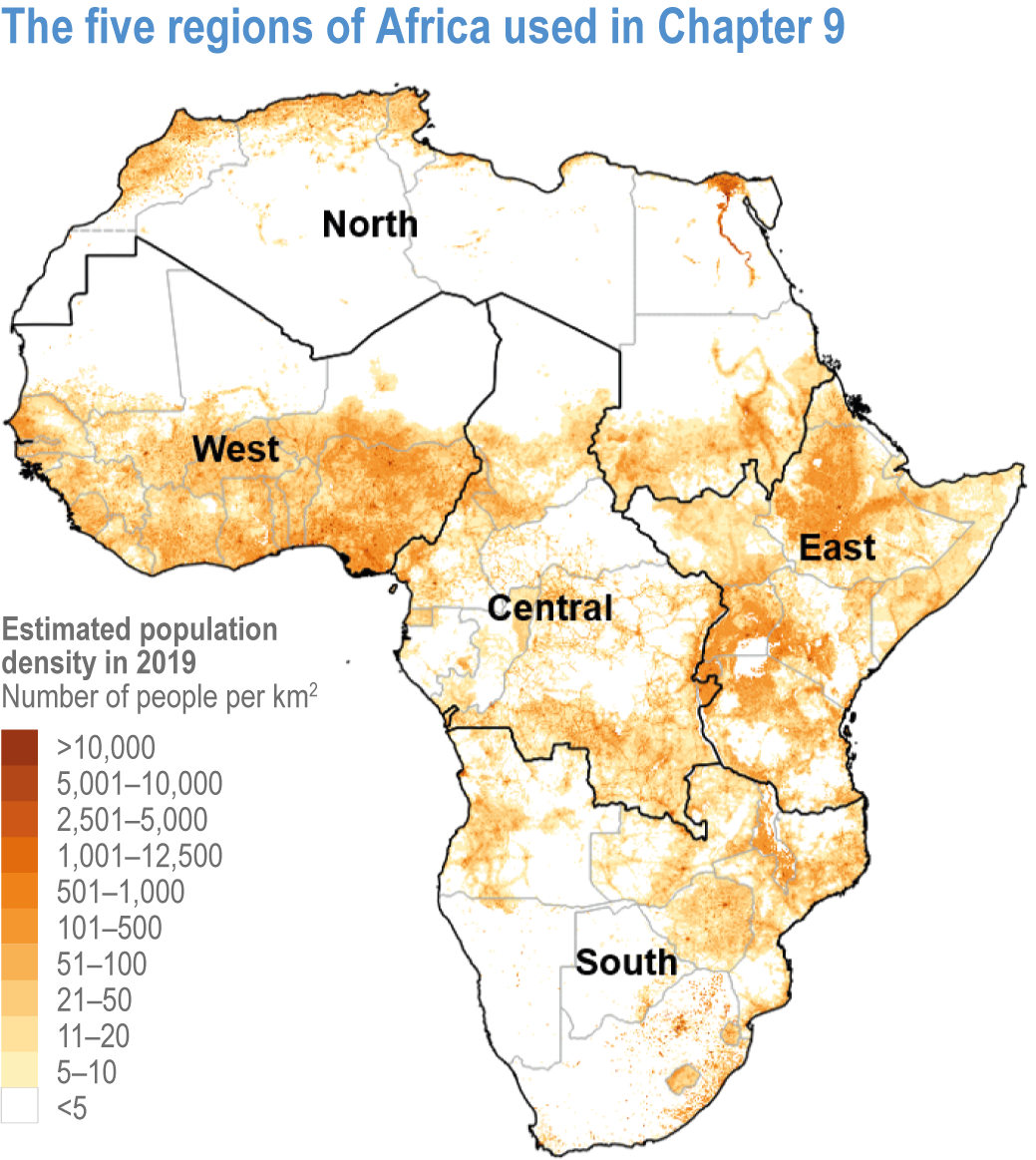Figure 9.1
Figure caption
Figure 9.1 | The five regions of Africa used in this chapter, also showing estimated population density in 2019. The population of Africa was estimated at 1.312 billion for 2020, which is about 17% of the world’s population but this is projected to grow to around 40% of the world’s population by 2100 (UNDESA, 2019a). Although 57% of the African population currently live in rural areas (43% urban), Africa is the most rapidly urbanising region globally and is projected to transition to a majority urban population in the 2030s, with a 60% urban population by 2050 (UNDESA, 2019b). The 2019 gross domestic product (GDP) per capita in constant 2010 USD averaged USD 2250 across the 43 countries reporting data, ranging from USD 202 (Burundi) to USD 8840 (Gabon), with 40% of the population of sub-Saharan Africa living below the international poverty line of USD 1.90 per day in 2018 (World Bank, 2019). The highest life expectancy at birth is 67 (Botswana and Senegal) and the lowest is 52 (Central African Republic) World Bank (2019). Grid-cell population density data for mapping are from Tatem (2017); WorldPop (2021).
